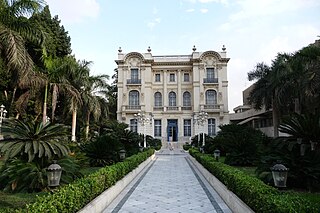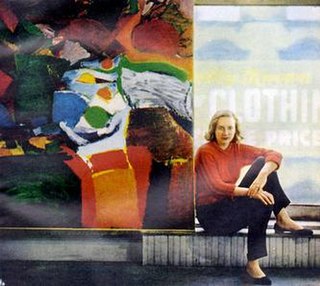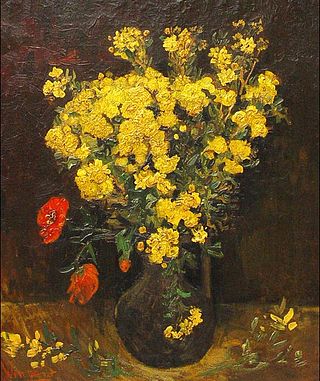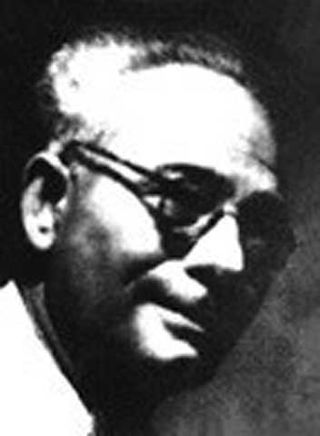
Anselm Kiefer is a German painter and sculptor. He studied with Peter Dreher and Horst Antes at the end of the 1960s. His works incorporate materials such as straw, ash, clay, lead, and shellac. The poems of Paul Celan have played a role in developing Kiefer's themes of German history and the horrors of the Holocaust, as have the spiritual concepts of Kabbalah.
Gazbia Sirry was an Egyptian painter.

Abdul Qadir Al Rassam, عبد القادر الرسام), 1952 - 1882), was born in Baghdad, Ottoman Empire. He was one of the first generation of Iraqi artists to study abroad and paint in the European style. He was influential in terms of introducing local audiences to European art. He is noted for his portraits and landscapes, painted in the Realist style.

André Lhote was a French Cubist painter of figure subjects, portraits, landscapes and still life. He was also active and influential as a teacher and writer on art.

Coptic art is the Christian art of the Byzantine-Greco-Roman Egypt and of Coptic Christian Churches. Coptic art is best known for its wall-paintings, textiles, illuminated manuscripts, and metalwork, much of which survives in monasteries and churches. The artwork is often functional, as little distinction was drawn between artistry and craftsmanship, and includes tunics and tombstones as well as portraits of saints. The Coptic Museum in Coptic Cairo houses some of the world's most important examples of Coptic art.
Hassan Mohamed Hassan (1906–1990) was one of the pioneers of Egyptian modern art from the second-wave such as Saeed elSadr (1909–1986) and Ahmed Osman. Hassan has been called Painter of the Epics and Philosophies by critics and has been recognized by his colleagues for his strong adherence to Classical forms in Egyptian modern art. He has produced over 100 paintings some of which are on the large scale and most of which remain 'stored' with the family in his—now closed—residence near the Pyramids in Cairo. He had authored 4 books in arts, history of art, philosophy of art, and arts and society.

The Gezira Center for Modern Art, also known as the Egyptian Modern Art Museum, is an art museum for modern and contemporary art, located in Cairo, Egypt. It is part of the National Cultural Centre with the Cairo Opera House, on Gezira Island, just across the Nile on Qasr el-Nil Street west of downtown Cairo.

The Mohamed Mahmoud Khalil Museum is a museum in Giza, Egypt. It is located in a palace built in the early 20th century.

Grace Hartigan was an American Abstract Expressionist painter and a significant member of the vibrant New York School of the 1950s and 1960s. Her circle of friends, who frequently inspired one another in their artistic endeavors, included Jackson Pollock, Larry Rivers, Helen Frankenthaler, Willem and Elaine de Kooning and Frank O'Hara. Her paintings are held by numerous major institutions, including the Museum of Modern Art in New York City. As director of the Maryland Institute College of Art's Hoffberger School of Painting, she influenced numerous young artists.

Poppy Flowers is a painting by Vincent van Gogh with an estimated value of US$50 million to $55 million; it was stolen from Cairo's Mohamed Mahmoud Khalil Museum twice; first in 1977, then again in August 2010 and has yet to be found.
Tharwat Okasha was an Egyptian writer, translator and minister of culture during the Nasserite era, Tharwat Okasha, who is referred to as the founder of Egypt's cultural institutions.
Mohamed Nagy, also spelled Mohamed Nagi and Muhammad Naji was an Egyptian artist. He is considered to be among the founders of modern Egyptian art, and was responsible for establishing the modern painting school of Egypt. He was the recipient of the golden prize of the Salon du Paris for his "Egypt Renaissance". His other works, which have been well received, are the murals of "Ancient Egyptian medicine, Arab medicine, Folk medicine and "Inauguration of Mohamed Ali".

Effat Nagy was an Egyptian artist who has a museum in Cairo devoted to her and her husband's works. The museum is called Museum of Saad El-Khadem and Effat Nagy.
Nadia Baher Sirry is a Cairo-born painter of Turkish-Lebanese descent, born in 1958.

Ahmed Sabri, sometimes Ahmad Sabry was an Egyptian painter born in Cairo. He was one of the most prominent pioneers of modern portraiture art in Egypt.

The Museum of Contemporary Art is an art museum in Bangkok, Thailand. It is privately owned by business executive Boonchai Bencharongkul, and was opened in 2012. The museum, one of the largest contemporary art museums in Asia, features an extensive collection of works by many famous Thai artists, including Thawan Duchanee, Hem Vejakorn, Chalermchai Kositpipat and Prateep Kochabua.
Mohsen Shaalan or Shalaan was an Egyptian artist and former Deputy Minister of Culture, serving as the Head of the Fine Arts Sector from 2006 until 2010. He was ousted from his position in the Ministry of Culture following the 2010 theft of Van Gogh's Poppy Flowers from the Mohamed Mahmoud Khalil Museum in Cairo. He later served one year in prison on charges stemming from the theft, which prosecutors argued was made possible by insufficient security under his watch.
Nikola Milojević was one of the most prolific Serbian portraitists of his generation. He was also a popular Belgrade studio photographer, a representative of academic realism of the 19th century along with many of his colleagues.











